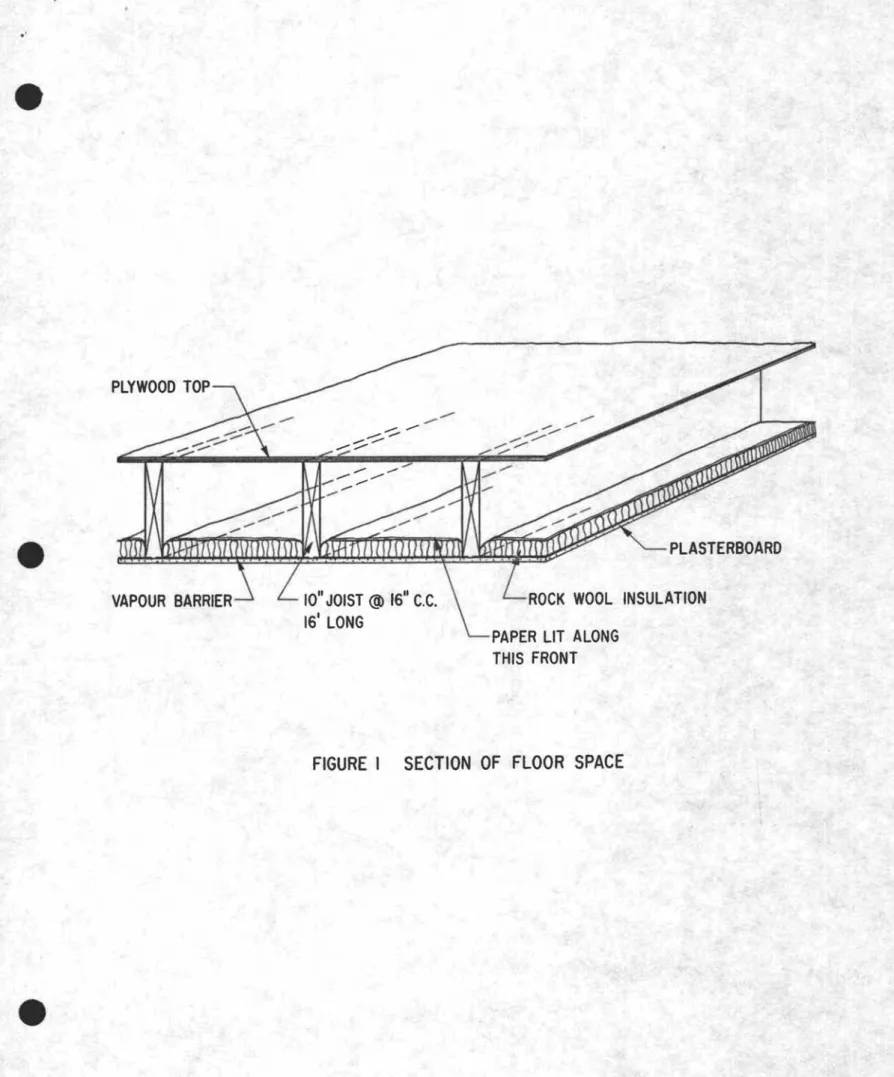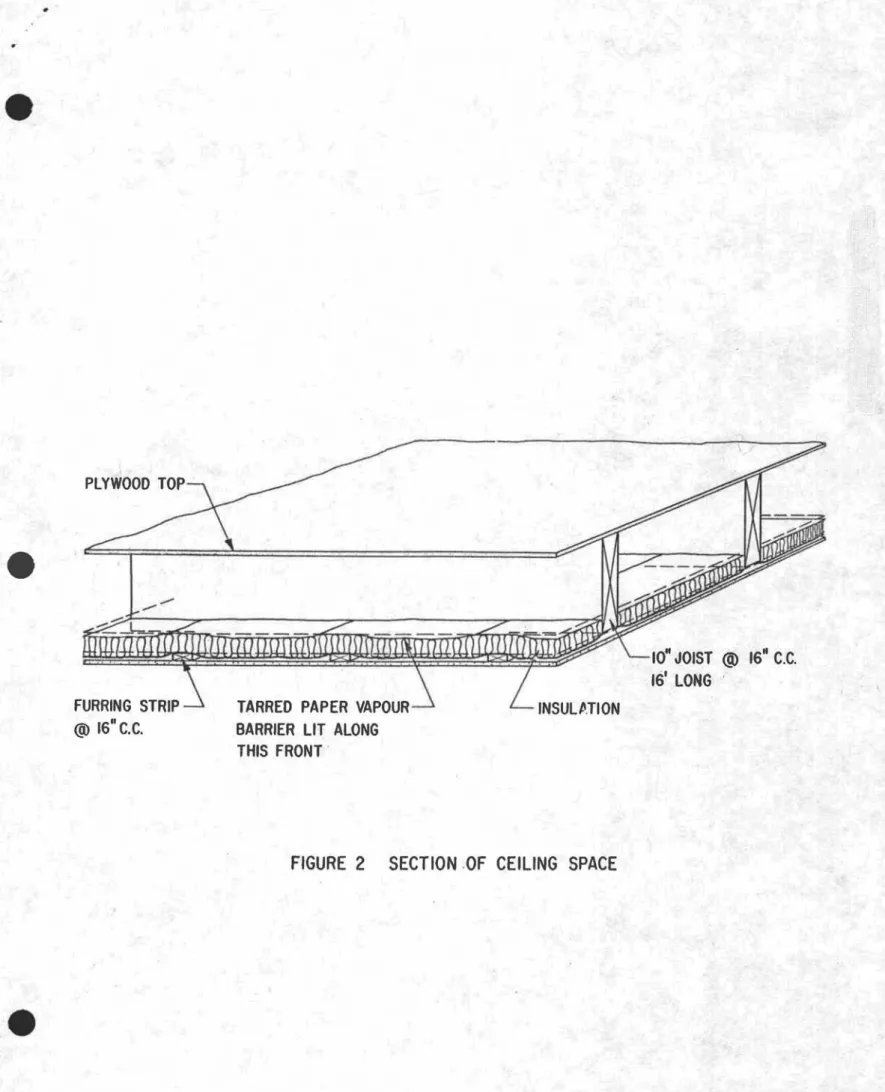Publisher’s version / Version de l'éditeur:
Technical Note (National Research Council of Canada. Division of Building Research), 1961-11-01
READ THESE TERMS AND CONDITIONS CAREFULLY BEFORE USING THIS WEBSITE.
https://nrc-publications.canada.ca/eng/copyright
Vous avez des questions? Nous pouvons vous aider. Pour communiquer directement avec un auteur, consultez la première page de la revue dans laquelle son article a été publié afin de trouver ses coordonnées. Si vous n’arrivez pas à les repérer, communiquez avec nous à PublicationsArchive-ArchivesPublications@nrc-cnrc.gc.ca.
Questions? Contact the NRC Publications Archive team at
PublicationsArchive-ArchivesPublications@nrc-cnrc.gc.ca. If you wish to email the authors directly, please see the first page of the publication for their contact information.
NRC Publications Archive
Archives des publications du CNRC
For the publisher’s version, please access the DOI link below./ Pour consulter la version de l’éditeur, utilisez le lien DOI ci-dessous.
https://doi.org/10.4224/20359074
Access and use of this website and the material on it are subject to the Terms and Conditions set forth at
The Fire Hazard of Paper-Backed Batts in Enclosed Ceiling Spaces McGuire, J. H.; Ruscoe, B. E.
https://publications-cnrc.canada.ca/fra/droits
L’accès à ce site Web et l’utilisation de son contenu sont assujettis aux conditions présentées dans le site LISEZ CES CONDITIONS ATTENTIVEMENT AVANT D’UTILISER CE SITE WEB.
NRC Publications Record / Notice d'Archives des publications de CNRC:
https://nrc-publications.canada.ca/eng/view/object/?id=c66acf61-4a17-43c1-9c23-7a533643a3b3 https://publications-cnrc.canada.ca/fra/voir/objet/?id=c66acf61-4a17-43c1-9c23-7a533643a3b3
DIVISION OF BUILDING RESEARCH
NATIONAL RESEARCH COUNCIL OF CANADA
,"
セゥj
'f
E
C
1HI
!if ][
CAlL
NOTE
セ
セャ
NOT FOR PUBLICATION FOR INTERNAL USE
PREPARED BY J. H. McGuire
B. E. Ruscoe CHECKED BY GWS APPROVED By NBH
PREPARED FOR
SUBJECT
Record Purposes
THE FIRE HAZARD OF PAPER-BACKED BATTS IN ENCLOSED CEILING SPACES
DATE November 1961
The use of paper-covered insulation batts incor-porating a vapour varrier on one side has been drawn to the attention of the Division of Building Research as a possible
factor in the rapid spread of fire throughout bUildings. It
is suggested that the possible danger is especially signifi-cant in buildings under construction (where the paper backing is exposed) or in the attio spaces of completed buildings. To date the Fire Seotion has believed that so many factors
affect the development of fire in partially completed buildings that the role of paper-backed betts could not be very
signifi-cant. In recent monthsg ィッキ・カ・イセ certain incidents have
suggested that the rapidi.ty with which a fire has spread through a building has been due to paper backing on batts in
enolosed wood floor and plaster oeiling systems. This note
desoribes tests performed to evaluate the hazard.
A section of a oeiling-floor spaoe was constructed (Fig. 1) and the paper oovering of the batt ignited along a
l6-in. front. Flames spread slowly to 4 ft from the souroe
of ignition but went out without involving the joists or sub-floor.
With the same ッッョウエイオッエゥッョセ a orib oonsisting of
40 gm of fibreboard was set on the paper baoking and used as
an igniting source. The paper ignited almost immediately and
the flame front spread slowly a'way from the souroe0 At a
slightly later stage the orib fire i.gnited both the joists
and the underside of the ウu「Mヲャッッイセ and a fully developed fire
2
-Using a similar section, differing only in that the paper backing was removed from the batts, the same procedure was followed. The crib ignited the joists and sub-floor and again a fully developed fire spread rapidly throughout the space. The times for spread of fire to the further end for both tests were
5
min15
sec and4
min35
sec, respectively. No particular significance is attached to the difference in these times, although it may have been associated with the consumption of oxygen by the slowly spreading fire in the paper-backed batts.A second type of construction (Fig. 2) was adopted to investigate the likelihood of spread of fire along the underside of the batt when a furring strip technique is used to support the plasterboard. With this arrangement the cavity was continuous only in the direction of the furring strip for 1 in. or so on either side. It was not found possible to develop a self-sustaining fire under these conditions even by igniting the tarred vapour barrier with a propane torch. To investigate the importance of the partial closing of the cavity by the sagging of the batts in this second type of
construction, a further test was carried out using 2- by 2-in. furring strips that eliminated the effect. Again, it was not found possible to establish a self-sustaining fire even when a light draught was induced in the area.
It was concluded from these tests that the oovering on insulation batts has very little over-all effect on the likelihood or the development of a serious fire in a ceiling space. In this context a small fire involving the paper only may be disregarded.
The fact that paper covering is more readily
ignitable than other materials will generally not be highly significant, since the consequence of ignition of the paper will usually result only in the destruction of the paper
itself. In some circumstances, however, a spread of fire along the paper in a ceiling space could give rise to the ignition of, say, the paper on a batt in a wall space and
this in turn might well result in the establishment of a fully developed fire in the wall space. Under these circumstances the ease of ignition of the paper in the ceiling space would be highly significant.
It must be emphasized that the scope of this note is confined solely to the fire hazard associated with paper-backed batts in enclosed ceiling spaces. The hazard associated with their use in wall spaces has not been investigated.
," VAPOUR BARRIER
--_
... MセM---
--- ---
...... lO" JOIST @ 16"C.C. 161 LONG--
-
---Mセ----
... PLASTERBOARD ROCK WOOL INSULATIONPAPER LIT ALONG THIS FRONT
•
IOfl JOIST @ 16" C.C. 16' LONG
TARRED PAPER VAPOUR BARRIER LIT ALONG THIS FRONT· PLYWOOD TOP
FURRING STRIP @ 16"C.C.

